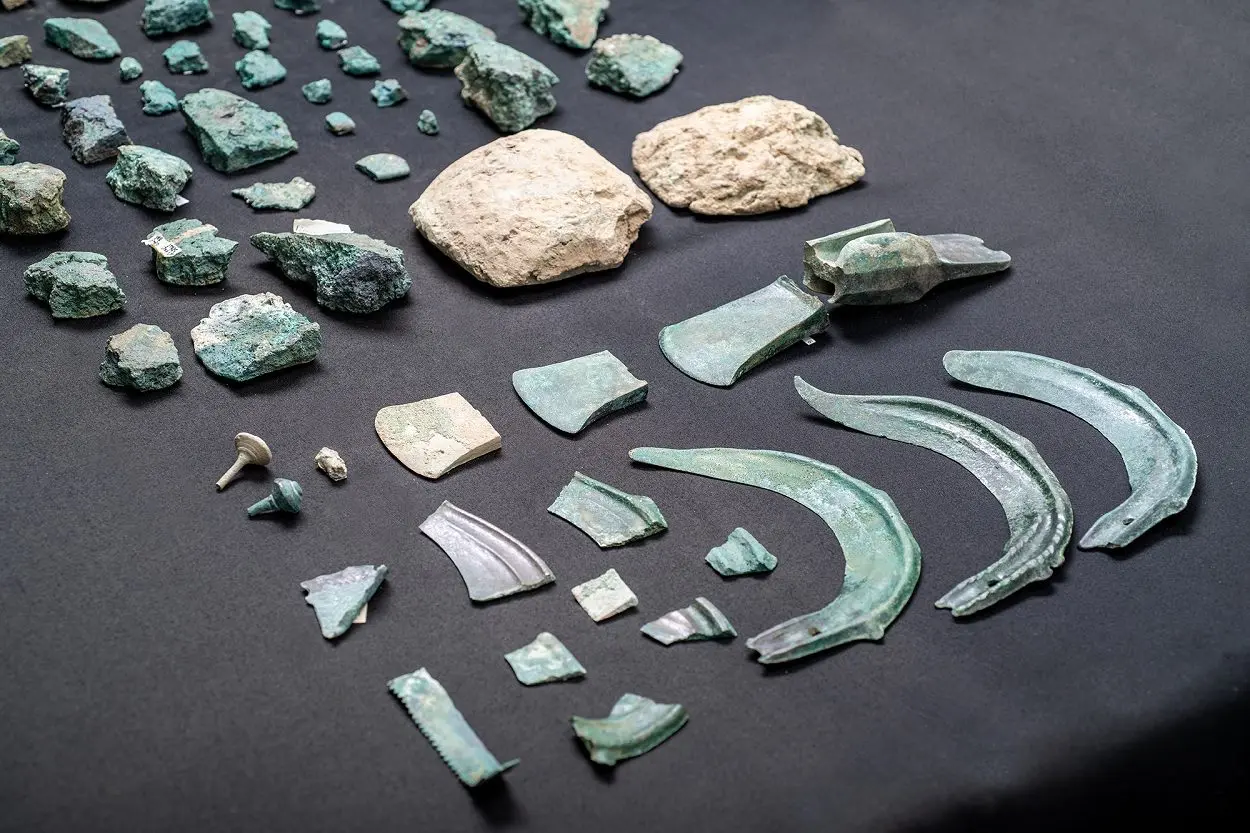Archaeologists from the Graubünden Archaeological Service have uncovered a large assemblage of Bronze Age artefacts during excavations near an ancient settlement at the foot of Motta Vallac, located in the canton of Graubünden, Switzerland.
Excavations were part of the CVMBAT research project to survey the landscape for remains of conflict sites between the Romans and the Suanetes, a Rhaetian Alpine tribe whose language and culture was related to those of the Etruscan culture.
The focus of the research was a battlefield site from the Roman Alpine campaign from around 15 BC, A conflict which resulted in Rhaetian territories being annexed by the expanding Roman Empire.
The site is located in the ‘Vostga’ area, south of the important prehistoric settlement of Motta Vallac, near Salouf, in close connection with a central trans-Alpine traffic route.
The discovery was made following a survey of the area around the Crap-Ses Gorge, revealing 80 bronze objects which were buried in a narrowly defined pit.
The assemblage of objects dates from the 12th to 11th century BC, consisting of sickles, several axes, a fragment of a saw, decorative items, and raw pieces made of copper.
The finds were found in the remains of a wooden box which was wrapped in leather and either placed as an offering by intentionally damaging selective pieces, or possibly for safeguarding during times of conflict.
“The comprehensive scientific investigation that will now follow this discovery will provide far-reaching insights into late Bronze Age cultural, economic, and landscape history,” says Thomas Reitmaier, an archaeologist for the Graubünden canton.
The CVMBAT project is scheduled to run for six years. After ongoing surveys of the landscape around the research area, there will be an exhibition and publication of the finds in 2026.
Header Image Credit : Canton of Graubünden







